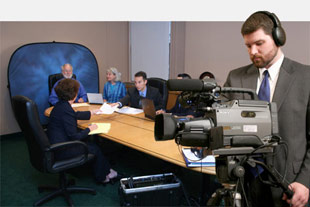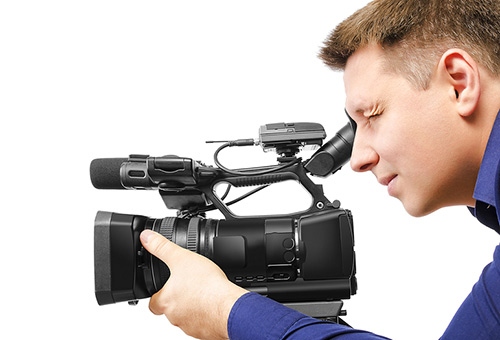Why Legal Videography Is Crucial for Accurate Legal Record-Keeping
In the world of legal procedures, the accuracy of record-keeping is extremely important, and legal videography becomes a crucial device in this context. By recording the nuances of verbal and non-verbal communication, it considerably minimizes the possibility for misinterpretation that can accompany typical written records. Furthermore, the conservation of authentic aesthetic proof not just enhances the reputation of testaments but also contributes to a detailed account of occasions. As we discover the complex benefits of legal videography, one should consider its ramifications for the future of judicial honesty and openness - legal videography.
Value of Visual Proof
Establishing the value of aesthetic proof in legal procedures is paramount for guaranteeing exact record-keeping and boosting the overall honesty of the judicial procedure. Visual evidence acts as an essential device in recording events, problems, and other relevant information that may be vital to an instance. Unlike written accounts, which are prone to analysis and predisposition, visual recordings provide a goal, unalterable representation of truths as they happened.


This type of proof can catch a range of aspects, including witness actions, ecological context, and physical evidence, all of which may influence judicial outcomes. By presenting a clear and thorough visual narrative, legal videography eliminates obscurity and helps to preserve the credibility of the evidence.
Moreover, aesthetic evidence can be critical in minimizing disagreements over accurate discrepancies, as it enables for a direct comparison against statement and other documented records. In an age where digital innovation is increasingly common, the capacity to existing visual evidence properly can significantly enhance the overall quality of lawful proceedings. Inevitably, the unification of visual evidence not just bolsters the documentation procedure however additionally reinforces public count on the judicial system by advertising openness and accountability.
Enhancing Statement Trustworthiness
The combination of lawful videography right into courtroom procedures substantially boosts the reputation of witness statement. By capturing the nuances of spoken and non-verbal interaction, video recordings give a more thorough depiction of a witness's disposition, feelings, and integrity. This aesthetic paperwork allows jurors to observe the witness's body language, faces, and overall manner, which are crucial elements that can affect their perception of testament reputation.
Additionally, legal videography lowers the capacity for misinterpretation or distortion of testament that may occur in written transcripts. Visitors can see and listen to the statement as it existed, making certain that the context and tone are protected. This authenticity promotes a higher sense of trust among jurors, who might be more likely to think testament that they can witness firsthand.
In addition, the existence of video clip footage can discourage witnesses from providing misleading or exaggerated declarations, as they know that their statement is being videotaped. This accountability enhances the stability of the judicial procedure. Inevitably, legal videography functions as an essential tool in ensuring that witness testimony is not just precisely shown yet likewise seen with enhanced reputation by all events included.
Comprehensive Record Preservation
Comprehensive document address preservation is necessary for maintaining the honesty of legal proceedings. Legal videography acts as an essential device in this procedure, providing a precise aesthetic and auditory account of testimonies, depositions, and other turning points in a situation. Unlike traditional written transcripts, video clip recordings capture the subtleties of body movement, tone, and emotion, which are vital for comprehending the context and intent behind statements made throughout lawful process.

Additionally, the ability to assess video evidence permits lawyers to identify essential information that might have been forgotten in created records. By keeping a detailed archive of legal proceedings through videography, law practice can copyright the greatest criteria of accuracy and accountability, ultimately contributing to a fairer judicial procedure.
Enhancing Lawful Procedures
Enhancing legal procedures is necessary for improving effectiveness and reducing delays within the judicial system. Lawful videography works as a critical tool in attaining this goal by offering clear and exact aesthetic documents of court hearings, depositions, and testaments. This modern technology permits real-time recording, guaranteeing that all verbal and non-verbal cues are recorded, which can help with quicker resolution of conflicts.
The combination of videography into legal processes minimizes reliance on typical approaches, such as extensive records, which can be lengthy to create and assess. By having access to tape-recorded video, lawyers can promptly reference key moments, improving their capacity to prepare and present situations properly. This immediacy also assists in the making clear of testimonies, reducing the possibility for false impression.
In addition, visual documents fosters a much more interesting court experience for jurors, aiding them to grasp intricate details more readily. Inevitably, legal videography streamlines interaction amongst all click over here now parties included, from lawyers to judges to jurors, consequently advertising a more reliable judicial process (legal videography). In an era where time is important, embracing this modern technology is essential for the modern legal landscape
Admissibility in Court
Accurate paperwork is vital not only for efficiency but likewise for making sure that proof is acceptable in court. Lawful videography serves as an important device in this process, giving a trusted visual record of statements, declarations, and occasions.
To be deemed acceptable, lawful videography has to adhere to recognized procedures, such as appropriate equipment usage, suitable lighting, and clear sound capture. Furthermore, it is necessary to have actually certified videographers that understand the legal needs bordering evidence collection. The chain of protection have to additionally be preserved to avoid any claims of tampering or modification.
Furthermore, lawful videography can improve the persuasiveness of evidence by supplying jurors with a straight view of the testament, enabling an extra involved understanding of the instance. In summary, the assimilation of legal videography right into record-keeping not just sustains performance yet also reinforces the integrity and admissibility of evidence in court procedures.
Final Thought
To conclude, lawful videography plays a pivotal function in guaranteeing exact legal record-keeping by providing unbiased aesthetic paperwork. This technique improves the integrity of statements, maintains detailed records, and simplifies legal proceedings. Furthermore, the admissibility of high-quality video evidence in court more underscores its relevance - legal videography. Eventually, the incorporation of lawful videography into the judicial procedure advertises transparency and strengthens public count on the stability of the lawful system.